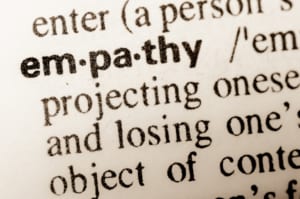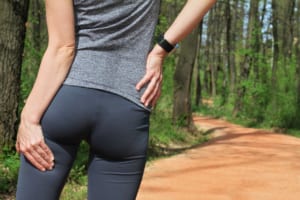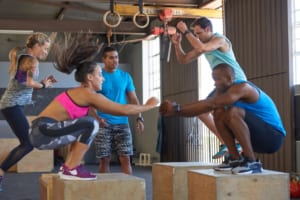How to Keep a Healthy Spine
Did you know that back pain is one of the most common reasons for sickness absence in the UK*

According to the Office of National Statistics, an estimated 141.4 million working days are lost each year to sickness or injury. With musculoskeletal problems – including back pain, neck pain and upper limb issues – often cited as the reason. And the bad press about back pain doesn’t end there. It has also been recorded in recent years as the top cause of disability**.
The spine is our body’s central support structure. It’s a column of 26 bones — 24 separate vertebrae inter-spaced with cartilage, plus the sacrum and coccyx. It makes up the spinal ‘scaffolding’, through which the spinal cord passes, keeps us upright and enables flexible movement. It also sets us apart from those famous invertebrates – the jellyfish!
And it can be a master of disguise. Back problems can be felt anywhere along the spine, from the neck to the lower back. And they might include referred pain, which can give widespread symptoms (pain, numbness, pins & needles and weakness) into the upper or lower limbs, the head and abdominal/chest regions. And these referred symptoms can make diagnosis more difficult.
So, since prevention is better than cure, I’ve compiled a list of five everyday things we can all do to help look after our backs:
Good posture – day and night
Avoid slumping in a chair or on the sofa, hunching over a desk or walking with your shoulders up by your ears. And, of course, the 21st century curse of resting your chin on your chest while using your phone. Instead, ensure your lower back is properly supported, sit up straight when you’re working on a computer or laptop and keep your chin up while you text!
And since we sleep for a third of our lives (hopefully), it’s also worth spending money on a good mattress and divan (slats do not support your mattress and in turn, your back). The latter being ‘a mattress for your mattress’. Ideally, the divan should not incorporate storage boxes as these lessen its effectiveness.
Bend at the hips
Always be sure to bend at the hips and not your back. Try to do this by keeping your upper body upright as much as possible and your chest forward. If you do a lot of lifting or bending, make sure you attend specific manual handling training.
Avoid shoulder/messenger bags
They might look fashionable but carrying heavy loads in shoulder and/or messenger bags can cause an imbalance of weight on your spine. If you lug around weighty items, like laptops and books, as a minimum, opt for a comfortable rucksack and be sure to use both shoulder straps. But ideally, do consider a rucksack with wheels.
Don’t stress – take a ‘chill pill’ (as my children kindly tell me)
As a trained Osteopath and Naturopath, I know there’s a close link between physical, mental and emotional health and that problems originating in one place can often show up as referred pain in another. And while some people manifest stress in their minds, others manifest it physically. Which causes us to tighten our muscles, particularly around our shoulders and down our spine.
Take a stand
Sitting for long periods of time has been proved to be bad for our health. So get up, go for a walk or get a drink every 30 minutes to get your back muscles (and everything else) working. If you spend your day at a desk, I’ve written before about the benefits of Active or Dynamic Sitting. This is where your seating allows or encourages you to move, increases your stability and strengthens your core abdominal muscles. There are lots of options on the market including the ‘Swopper Chair’, which I use myself.
Look after Your Spine
As we’ve discussed, the spine is a wonderful thing and it’s important to look after it. So, if you’ve started the new year with back, neck or hip pain then Osteopathy may be the answer.
Why not get in touch for more information or to book an appointment?
We have Osteopath clinics in Central London and North London

 To return to the Naturopathic Triangle, I like to think of what I do as playing chess on a three-layered board. With the top layer representing the physical being, the middle board the emotional and the bottom board the nutritional. And a move on the top board will affect not only the pieces on that board but also those on the middle and bottom.
To return to the Naturopathic Triangle, I like to think of what I do as playing chess on a three-layered board. With the top layer representing the physical being, the middle board the emotional and the bottom board the nutritional. And a move on the top board will affect not only the pieces on that board but also those on the middle and bottom.



